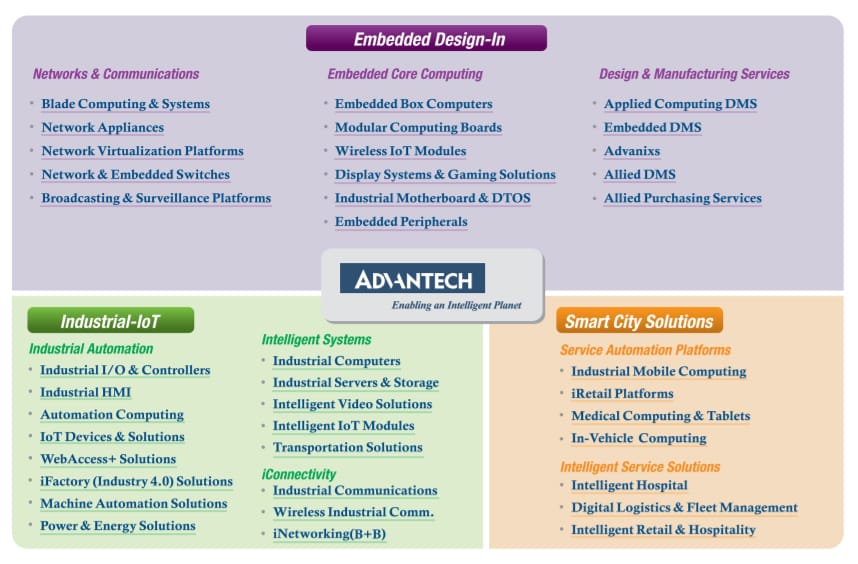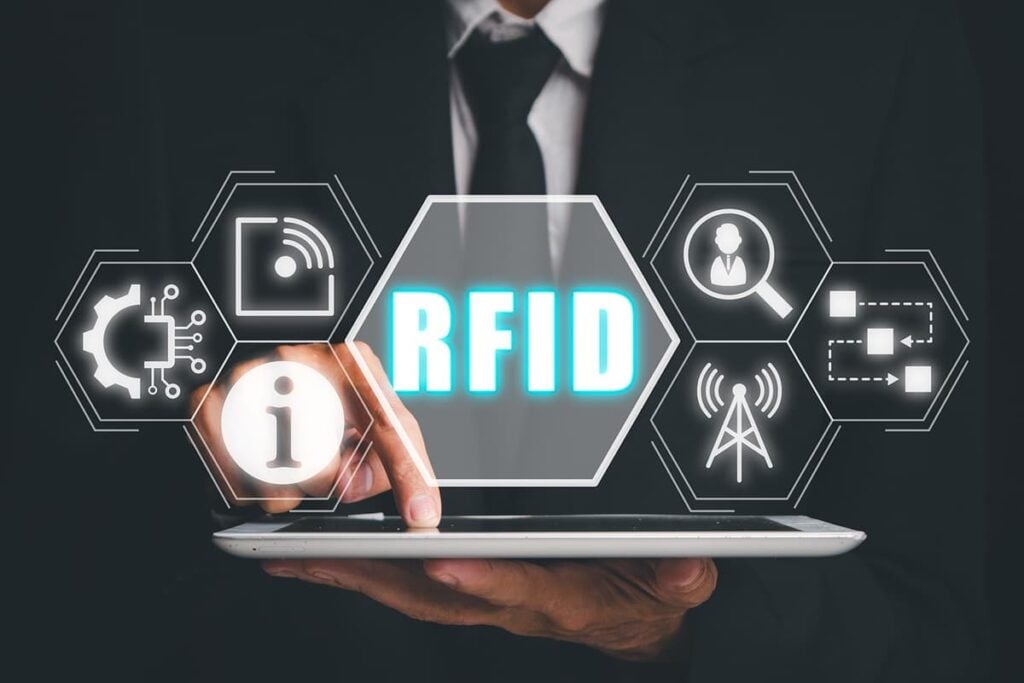SNSR – An Internet of Things ETF for IoT Investors
Table of contents

Long-time readers of Nanalyze know that one of our oft-repeated pieces of wisdom—and remember what they say about opinions and particular anatomical parts—is that one of the best ways to get skin into the game for any particular technology theme is through an Exchange Traded Fund (ETF). We recently profiled a couple of robotics and artificial intelligence ETFs, but you can pretty much find an ETF for just about any theme imaginable, including cannabis, the Bible or gay pride.
The idea behind an ETF is that it provides exposure to a basket full of companies that are somehow linked to the overarching theme. On the plus side, it provides far greater diversification than you can get by investing in just one or two stocks. Often, however, we find many ETFs just stretch the bounds of what might actually qualify under a particular theme, minimizing pure-play exposure (we talked about what “pure-play” means in our last article). For example, we found that the First Trust Nasdaq Artificial Intelligence and Robotics ETF (ROBT) seemed to diverge pretty starkly from its theme while the top 10 stocks that make up Global X Robotics & Artificial Intelligence ETF (BOTZ) seemed to offer more pure-play exposure. In either case, both ETFs were dramatically different showing just how different opinions can be about what exactly is “pure play” for any given investment theme.
We were interested to discover that Global X also offers an Internet of Things ETF called, imaginatively enough, Global X Internet of Things ETF (NASDAQ:SNSR). The fund tracks the Indxx Global Internet of Things Thematic Index which contains 44 stocks and has performance history back to 2010. The Internet of Things encompasses quite a wide variety of technologies involved in connecting sensors and machines to other machines to create increasingly complex webs of connected devices for automation and other purposes. One of the most basic examples is having your thermostat, locks or lights in your home digitally connected to respond to certain conditions or by voice command. A more complex setup might involve a farm with various sensors in the field that continuously relay data, usually through a cloud-based platform, about the health of the crops. All of that takes chips, electronics, wireless infrastructure, not to mention cool consumer products that look like they could zap you with a laser.
An Internet of Things ETF
SNSR has a pretty short history, as it only came online back in September 2016. The underlying index, however, has history from 2010 so we can compare it to the overall market. Indxx uses what appears to be an S&P 500 index to benchmark against as seen in the below example:

If you would have invested $1000 back on 06/30/2010 when the index began tracking, then today you would have about $3,255 without taking into account any fees. That’s a return of about +226% and certainly beats the S&P500 return of +151% over the same time frame. If however, we just invested in the tech-heavy Nasdaq using a tracker ETF like QQQ, we would have a return of about +252%. In this case we see that the IoT index isn’t outperforming the Nasdaq, so what are we paying management fees for then? Speaking of which.
SNSR charges an above-average management fee of 0.68%, while it only has about $110 million of assets under management. The index does a pretty good job of ensuring its top 10 stocks, which account for more than half of its 45-stock portfolio at 53.52%, are in the same playing field as IoT, despite being a somewhat amorphous category. More than 60% of the companies fall into the somewhat unsexy categories of semiconductors and electrical components. Here’s a look at the top 10 stocks in the ETF:
Only a couple of names are probably familiar to most retail investors—Garmin and Intel. Garmin has done a big pivot away from just being a GPS manufacturer to developing all sorts of connected devices, such as smartwatches and Garmin Speak, an Alexa-enabled device for cars. Consumer electronics only make up about 7% of the SNSR portfolio, so Garmin represents most of that category (Fitbit is way down the line at with a less than 1% weight).
Chip Off the Block
Intel, of course, is one of the largest, if not the biggest, semiconductor chip maker in the world. Like many chip and electronics manufacturers, Intel seems to have jumped on the IoT gravy train, listing the Internet of Things as one of its core technological offerings. The same goes for other chip makers on the list such as STMicroelectronics (NYSE:STM), a Swiss company that says it focuses on smart driving and IoT solutions. We came across them years ago on a story about Micro Electro Mechanical Systems. Skyworks Solutions (NASDAQ:SWKS) out of the Boston area targets areas as diverse as autonomous cars and smartphones. Both carry a market cap of about $17 billion, which is pretty small potatoes against Intel’s $228 billion market cap. Other chip makers weighing heavily on the portfolio include Silicon Lab.
Cypress Blooms
A semiconductor company called Cypress (NASDAQ:CY), headquartered in California, has been in turbo drive the last couple of years, with a return of about +95%, more than double that of the Nasdaq:
Cypress specializes in “chips for the connected world”. Dipping into the company’s financials we can see that its total revenues increased by about $404.7 million, or about 21%, to $2.3 billion in 2017 compared to the previous year. The company says the increase was primarily attributable to “increase in sales of products in our microcontroller, automotive, IoT Wireless Connectivity and Wired families.” The Motley Fool did a decent dive into Cypress recently, and said the following:
It also has a major foothold in consumer electronics with its USB-C controllers, as well as the IoT market thanks to its purchase of Broadcom‘s wireless IoT business in 2016. Cypress’ core growth strategy, dubbed “Cypress 3.0”, aims to turn the chipmaker into a “one-stop embedded solutions provider” for the IoT market.
We’ve come across someone else who wants to do that as well, and he happens to have a whole lot more capital since his company is SoftBank. His name is Mr. Son, and he has said that the chip maker he acquired, ARM Holdings, is expected to ship over 1 trillion IoT chips in the next 20 years with ARM IoT chips commanding an 80% market share. Incidentally, Cypress currently licenses quite a bit of intellectual property from ARM Holdings, which licenses their intellectual property to just about every chip company out there.
Maybe Semiconductors are Sexy
While researching the chip makers for this article, we stumbled across the SPDR S&P Semiconductor ETF (NASDAQ:XSD). While it’s a bit of a stretch to call this an IoT ETF, it’s apparent that the semiconductor industry is one of the key sectors that stand to grow from a connected world, a process that’s really just begun. XSD has taken in almost 3X more investor dollars than our IoT ETF with about $322 million in AUM and they only charge 0.35% in fees. The semiconductor ETF simply tracks the “S&P Semiconductor Select Industry Index” which is a very straightforward basket of all stocks that have a GICS “semiconductor” sub-industry classification. (Read this article if you want to know more about GICS). When it comes to performance, both ETFs have behaved almost identically. The semiconductor ETF has returned +223% since 06/30/2010 while the IoT ETF returned +226% over the same time frame.
Sensors Even More Sexy?
Sensors are the eyes and ears of the IoT ecosystem, so we’d expect to see a few companies near the top of the SNSR ETF. And here they are: AMS and Sensata (NYSE:ST), which together account for about 14% of the entire portfolio. The former is a Swiss company that provides sensors for the machine vision, medical, broadcast, traffic, scientific and photography imaging markets, just for starters. The latter is an American company more or less spun out of a division from Texas Instruments about a dozen years ago. It manufactures a wide range of sensors for applications such as pressure, temperature, and speed and position sensors in automotive systems, so less of the whizz-bang sort of sensors as seen on TV and more of the kinds that detect problems before a product blows up type of sensor. No where do we read about IoT in the company’s latest 10-K filing with the SEC, so maybe they just need to hire more marketing people.
If it’s IoT sensors you want to invest in, make sure you check out the piece we did last summer on How to Invest in Internet of Things (IoT) Sensors.
Odds and Ends
Rounding out the top 10 is a Taiwanese company called Advantech that provides full IoT system solutions—including both hardware and software—for things like smart energy systems and intelligent transportation systems. As you can see, the company is heavily into IoT products and integration:

Finally, there is Dexcom (NASDAQ:DXCM), a company we stumbled across a few years ago when looking at insulin pump technology. The company is more of a one-trick pony, providing medical equipment and software for continuous glucose monitoring for diabetics and others who need to track their glucose levels. The company has cooled off since we last checked on them, shedding nearly $2 billion in market cap but still posting a +350% return over the last five years.
Conclusion
A cursory look around shows that SNSR is one of the only IoT ETFs in town, though the underlying index hasn’t managed to outperform the Nasdaq since the almost 8 years it’s been around. Looking for pure plays in IoT isn’t as easy as with other themes such as robotics, where you would expect that a company builds something to do with robots, like giant saw blades for arms. However, the next question is it worth investing in this particular ETF or to stick with broader market exposure? For now it looks like simply just investing in a Nasdaq tracker ETF like QQQ, which incidentally has $63 billion in AUM and a 0.20% fee, may be the way to go.
Sign up to our newsletter to get more of our great research delivered straight to your inbox!
Nanalyze Weekly includes useful insights written by our team of underpaid MBAs, research on new disruptive technology stocks flying under the radar, and summaries of our recent research. Always 100% free.
















